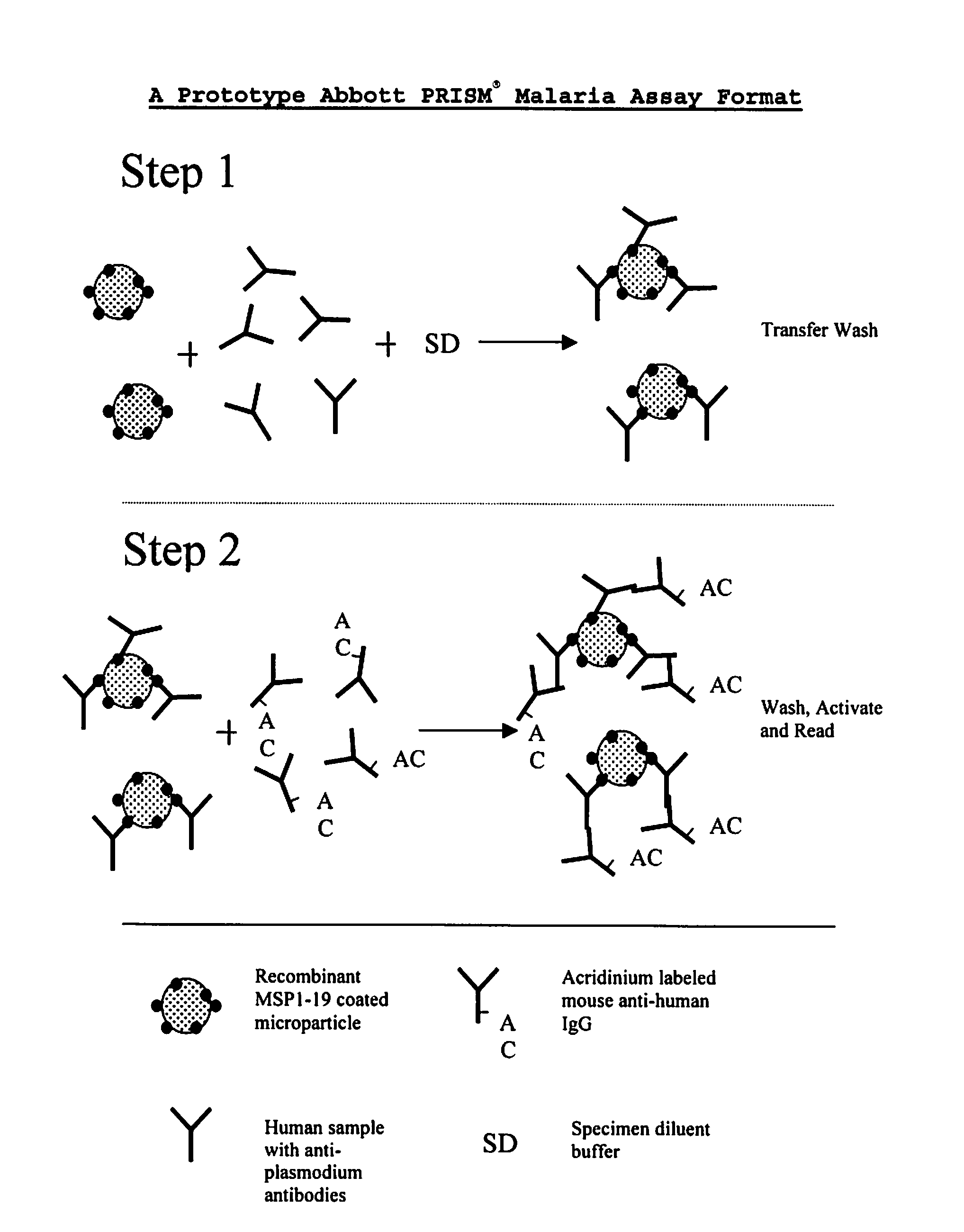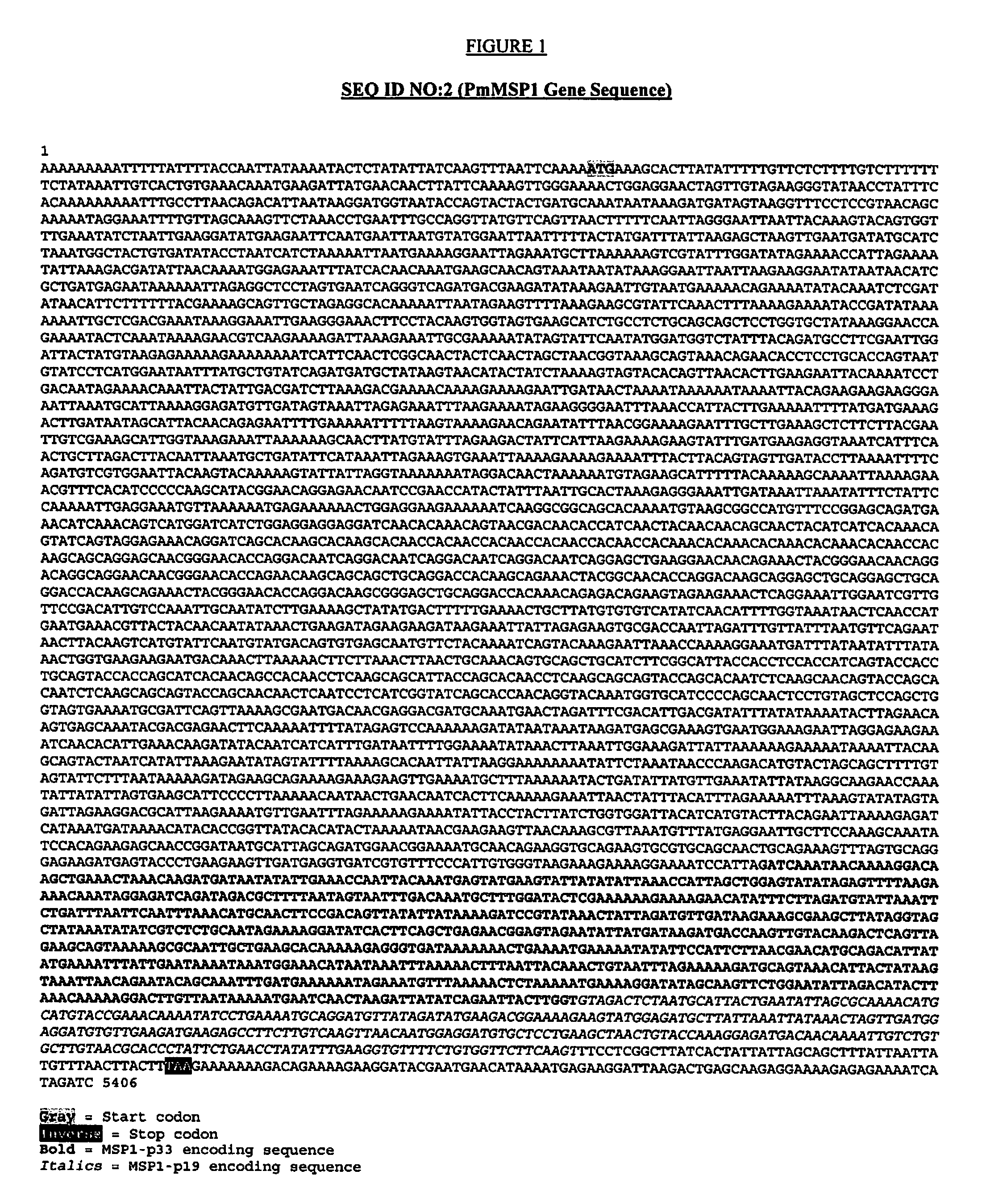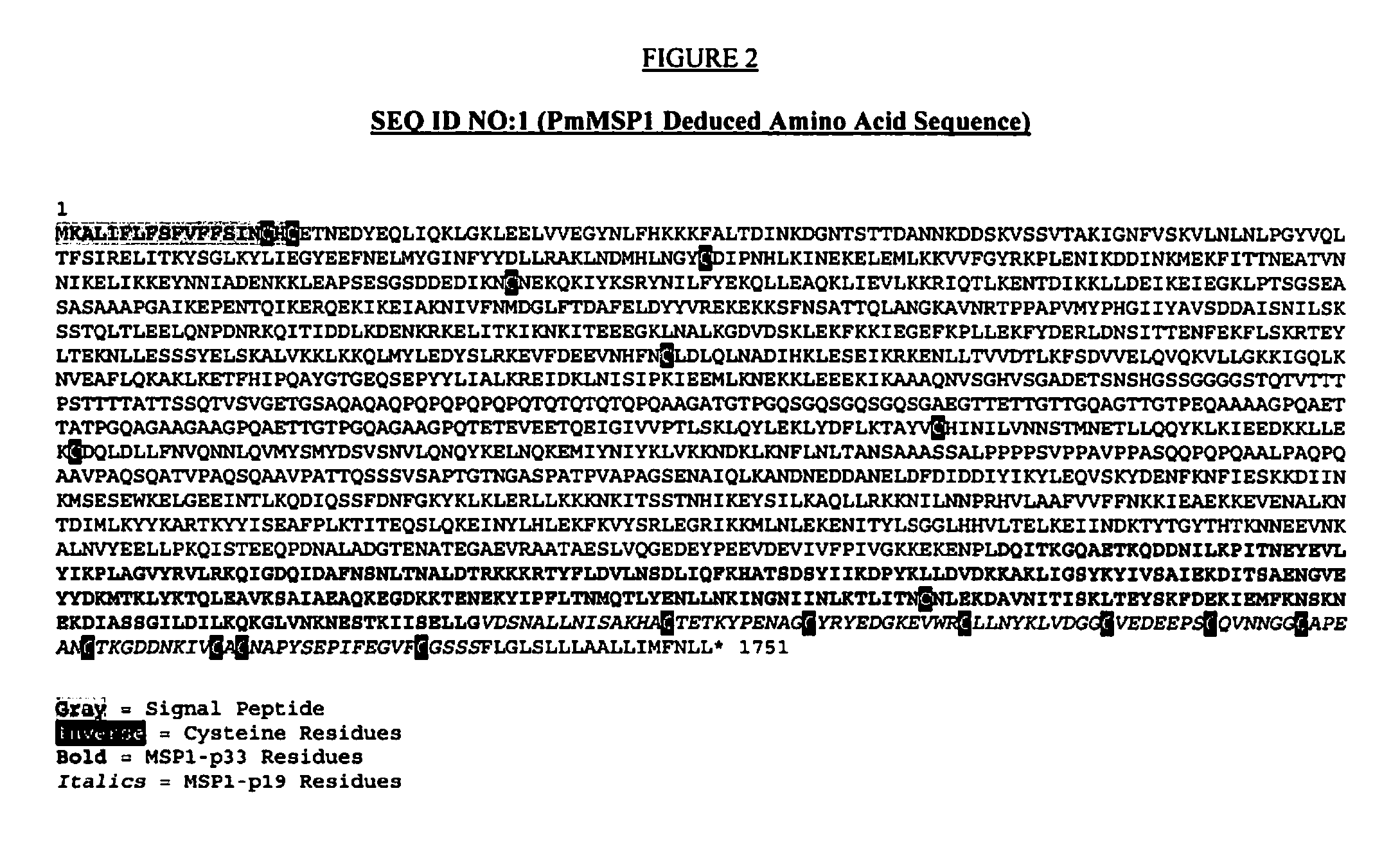Plasmodium malariae and plasmodium ovale genes and uses thereof
a technology of plasmodium ovale and malaria, which is applied in the field of nucleic acid sequences and amino acid sequences, can solve the problems of malaria patients' death, delayed diagnosis and treatment, and severe malaria
- Summary
- Abstract
- Description
- Claims
- Application Information
AI Technical Summary
Benefits of technology
Problems solved by technology
Method used
Image
Examples
example 1
Identification of Clinical Samples Infected With P. malariae and P. ovate
[0134]DNA was extracted from 82 whole blood samples (200 μl each) obtained from a malaria endemic region (Cameroon) using the QIAamp DNA Blood Mini Kit (Qiagen, Valencia, Calif.) according to the package insert. Subsequently, the method of Mangold et. al. (J. Clin. Micro., 43, p. 2435-2440, 2005, described below) was used to screen for the presence of Plasmodium DNA, and when detected, to make a species determination.
[0135]PCR was performed on each of the extracted Cameroon samples using a pair of primers designed to amplify a short portion of the 18S rRNA gene from any of the four human-infective Plasmodium species (P. falciparum, P. vivax, P. malariae and P. ovale). The PCR's were performed in a final volume of 25 μl containing 1×SYBR Green I Master (Roche, Indianapolis, Ind.), 0.5 μM each of the two primers PL1473F18 (SEQ ID No: 7) and PL1679R18 (SEQ ID No: 8) and DNA extracted from the equivalent of 1 μl o...
example 2
Amplification and Sequencing of the P. malariae MSP1 Gene
[0138]5′- Region of PmMSP1
[0139]This section describes the approach used to obtain sequence from near the 5′-end of the P. malariae MSP1 gene. A short stretch of sequence located near the 5′-end of the P. malariae MSP1 gene has been published (Fandeur et. al., Parasitology, 120, p. 11-21, 2000) and can be found in the Genbank database (Accession # AF138881). Degenerate primers As1 (SEQ ID No:9) and As2 (SEQ ID No:10) designed to amplify an approximately 387 base pair region of the 5′-end of the MSP1 gene from multiple Plasmodium species have been described, along with a nested P. malariae-specific primer pair, PmMSP1-F1 (SEQ ID No:11) and PmMSP1-R1 (SEQ ID No:12) (Fandeur et. al., Parasitology, 120, p. 11-21, 2000). The sequences of primers As1 (SEQ ID NO:9) and PmMSP1-F1 (SEQ ID NO:11) used here are slightly different than those reported by Fandeur et. al.
[0140]Nested PCR amplification using the degenerate and P. malariae-spe...
example 3
Amplification and sequencing of the P. ovale MSP1 Gene
[0169]5′-region of PoMSP1 (sample 510-10)
[0170]This section describes the approach used to obtain sequence from near the 5′-end of the P. ovale MSP1 gene. Degenerate primers As1 (SEQ ID NO:9) and As2 (SEQ ID NO:10) designed to amplify an approximately 387 base pair region of the 5′-end of the MSP1 gene from multiple Plasmodium species were described in Example 2.
[0171]A first round of amplification using the degenerate As primers was performed on two of the extracted samples (#283-4 and #510-10) previously identified as containing P. ovale DNA (see Example 1) as follows. PCR's were performed in a final volume of 20 μl containing 1×SYBR Green I Master (Roche, Indianapolis, Ind.), 1.0 μM each of the two primers As1 (SEQ ID NO:9) and As2 (SEQ ID NO:10) and DNA extracted from the equivalent of 1 μl of whole blood (see Example 1). Thermal cycling conditions for amplification were as follows: 1 cycle (95° C. for 5 minutes), 3 cycles (9...
PUM
| Property | Measurement | Unit |
|---|---|---|
| Fraction | aaaaa | aaaaa |
| Time | aaaaa | aaaaa |
| Nucleic acid sequence | aaaaa | aaaaa |
Abstract
Description
Claims
Application Information
 Login to View More
Login to View More - R&D
- Intellectual Property
- Life Sciences
- Materials
- Tech Scout
- Unparalleled Data Quality
- Higher Quality Content
- 60% Fewer Hallucinations
Browse by: Latest US Patents, China's latest patents, Technical Efficacy Thesaurus, Application Domain, Technology Topic, Popular Technical Reports.
© 2025 PatSnap. All rights reserved.Legal|Privacy policy|Modern Slavery Act Transparency Statement|Sitemap|About US| Contact US: help@patsnap.com



